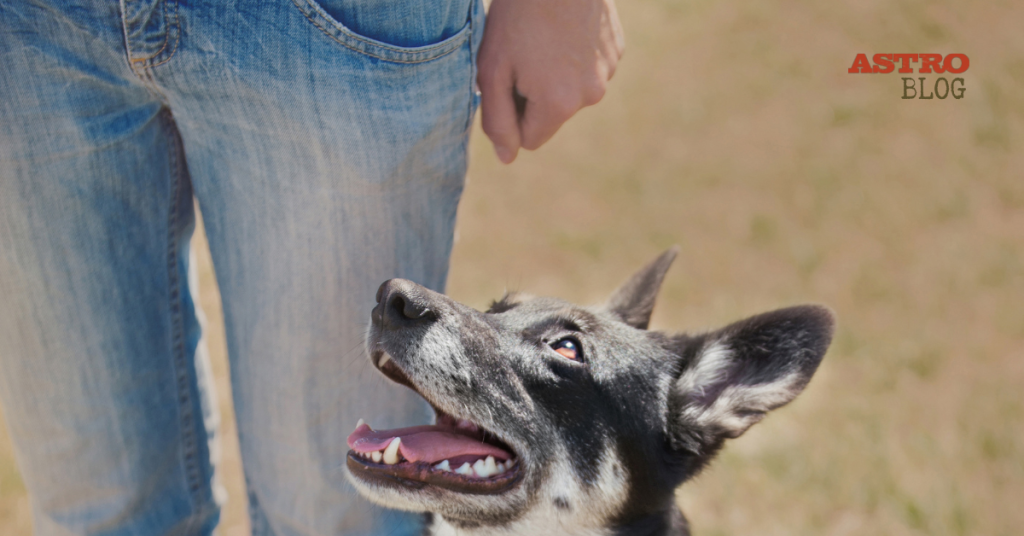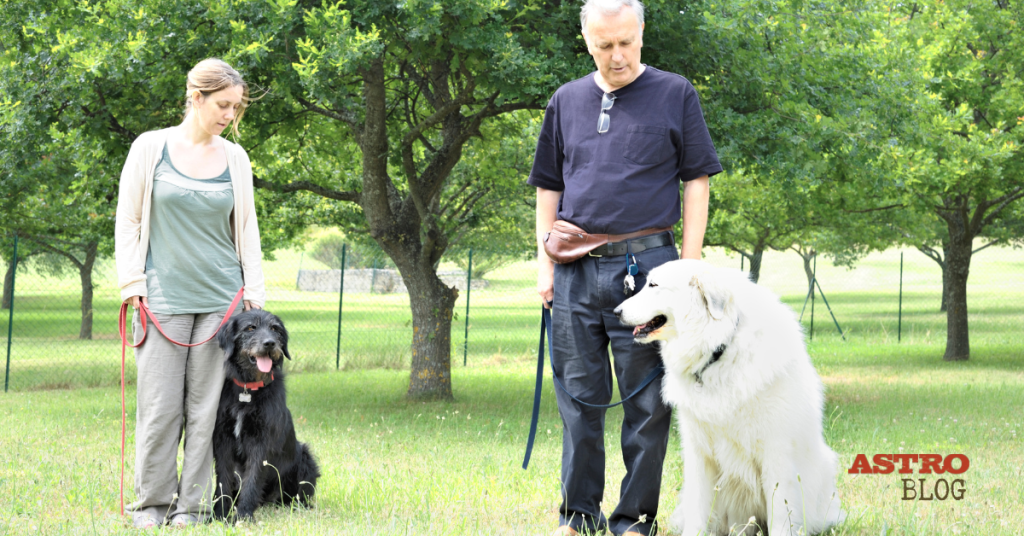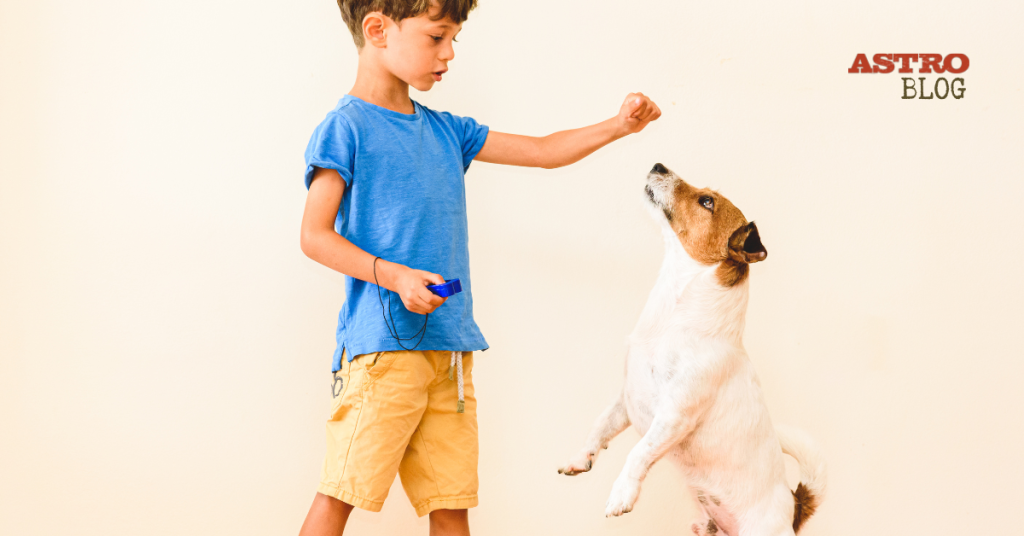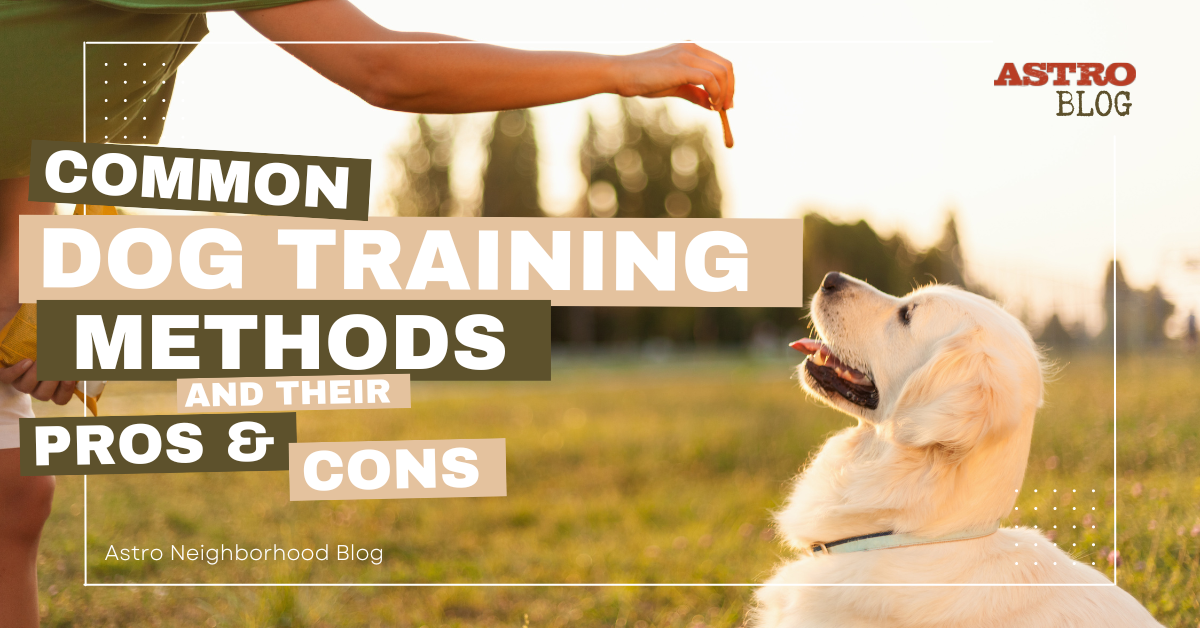So you’ve just adopted a canine companion, or maybe you’ve realized your tried-and-true doggo has a few unwanted behaviors you’d like to say goodbye to. You’ve committed to training said fuzz monster, but with so many training methods out there, you’re not sure where to start.
In this article, we’ll take you through some of the most popular dog training methods and their pros and cons, so you can decide how to best train your dog.
Positive Reinforcement Training
One of the most popular types of training around, positive reinforcement training, is a method of reward-based dog training that eschews punishments and focuses on rewards to convince your canine to ditch their bad habits in favor of better ones.
By using treats, positive attention, and freedom as rewards, positive reinforcement training teaches your dog desired behaviors (like “sit”, “off”, and “down”) by making positive behavior a fun and rewarding experience for them.
Positive reinforcement training is designed so that your dog wants to obey because it leads to so many good things, instead of having to obey because they’re afraid of getting hurt or punished. Not only does this make the training process much more enjoyable for both of you, but it also fosters a relationship free of fear and anxiety.

Pros
- Reward-based instead of fear-based
- Fosters positive relationship
- Creates great communication between human and canine
Cons
- Takes patience and consistency
Science-Based Training
Science-based dog trainers utilize information from the fields of comparative psychology, ethology, animal welfare, and applied behavior analysis to design a training program for your dog’s particular needs and behavioral issues.
This method is scientifically informed with the latest up-to-date research on effective behavior modification techniques and is a humane and ethical form of training. Animal behaviorists apply learning theory, operant conditioning, and classical conditioning to develop a training program that helps dogs learn new behaviors without punishment.
Science-based training can help you understand why a dog is behaving the way he/she is in the first place. By changing the underlying dynamics, you can help your furry friend change their actions and reactions. This modifies their behavior while helping you develop a deeper appreciation for your canine’s perspective of the world.

Pros
- Humane and ethical
- Can help transform moderate to severe behavioral challenges
- Well-researched techniques lead to better outcomes
Cons
- Can be difficult to find a properly educated trainer in some areas
Relationship-Based Training
Relationship-based dog training works with your dog’s emotional responses, cognitive processing, and relational bonding mechanisms. Ethologists have shown that dogs feel emotions similar to humans and are able to think on a level equivalent to a 3-year-old child. By listening to what your animal companion is communicating to you about what they feel and think, you can work with them to create positive behavioral patterns.
This type of training uses a teaching model to create good behaviors. New behaviors are first introduced in familiar environments with little distraction. Only as your dog masters each skill are they taught more difficult versions of the behavior and more difficult skills. This is similar to how you would teach a child.
Relationship-based training prioritizes consistent feedback. Praise is used when the behavior is correct, and gentle but firm feedback is given when the behavior is incorrect. However, the idea is that our animal kids (just like our human kids) learn better when they are having fun, so make sure training sessions are enjoyable. If your dog seems stressed, change your approach or end the session until they feel comfortable again.

Pros
- Based on tried-and-true teaching methods that are easy to implement
- Fun and relationship-building
- Adaptable to your dog’s abilities and timeline
Cons
- Requires learning to pay attention to your canine’s cues
Model-Rival Training
In model-rival training, dog trainers tap into the social nature of dogs to encourage them to learn. This method avoids extrinsic rewards like food and praise but instead focuses on intrinsic rewards where the task itself becomes the reward.
Dogs are tethered, crated, or held where they can observe other well-trained dogs complete a desired task. For example, you might hold your best buddy while his dog friend is given the task of retrieving a particular object (let’s say it’s a sock). While watching his friend complete the task, your dog learns the word “sock” and how to retrieve the sock.
This method is often used in search and rescue training as well as with herding dogs. It has been shown to be as effective as rewards-based training or classical conditioning. Dogs tend to get very excited with this type of training, often barking their enthusiasm. As long as the barking is coming from excitement rather than anxiety, it actually helps puppers learn faster and more effectively.

Pros
- Great for puppies
- Can be used to train complex tasks
- Avoids rewards and punishments and focuses on enthusiasm
Cons
- Requires other dogs
- Enthusiastic barking dogs can be overwhelming for some folks
Classical Conditioning Training
Classical conditioning training is based on associative learning theory, where your canine associates certain behaviors with particular events. Developed by Ivan Pavlov (remember Pavlov’s dog who salivated at the sound of a bell because it meant food?), this type of unconscious learning happens naturally all the time. Think about how excited your canine companion gets when they hear the sound of their leash. Dog trainers tap into this natural response to develop wanted behaviors and halt unwanted behaviors.
Trainers using this traditional dog training technique will often implement clicker training, where the dog is trained to associate the noise of the clicker with a reward. The clicker is then used to signal when Spot is “spot on” with her training.
Classical conditioning can also be used to ease anxiety by associating previously scary stimuli with rewards. For instance, if your pup gets anxious when you crate them, providing a lovely kong stuffed with peanut butter every time they enter the crate helps them start associating it with a special treat.

Pros
- Very effective at changing patterns of anxiety or aggression
- Natural form of learning
- Can be easily combined with other training methods
Cons
- Some trainers use negative reinforcement which can be emotionally and physically damaging to your animal companion
Dominance Training
Dominance training is formulated from the now-discredited theory that “Alpha” wolves use aggression to lead wolf packs, based on studies of captive wolves in the 1940s. Many studies have now shown wolves in the wild don’t operate within a strict hierarchy and are organized along cooperative familial bonds.
However, some trainers still use this fear-based model to scare dogs into behaving. E-collars, choke chains, yelling, pinning, and other damaging forms of “positive” punishment are used to intimidate a dog to obey. Negative punishments (taking something away until the dog behaves), such as withholding food and water, may also be utilized.
The Association of Professional Dog Trainers, the AVSAB, and many other accredited organizations strongly recommend against the use of dominance training.

Pros
- None
Cons
- Emotional and physical damage to dog
- Increased aggression
- Increased fear and anxiety
- Destruction of positive relationship
Conclusion
Whether you hire a trainer, sign up for classes, or decide to train your pup on your own, we hope this breakdown helps you find the best fit for your Fido.
Do you have more questions or are unsure where to find a respectable trainer in your neighborhood? Check with your neighborhood pet shop! There’s an excellent chance they will personally know some awesome trainers for you and your pup to try.
Remember, dog training is a two-way street – so keep yourself open to receiving and accepting training. It’s amazing how much a human and their dog can benefit and grow from engaging in the act of learning together. 🖤🐶








